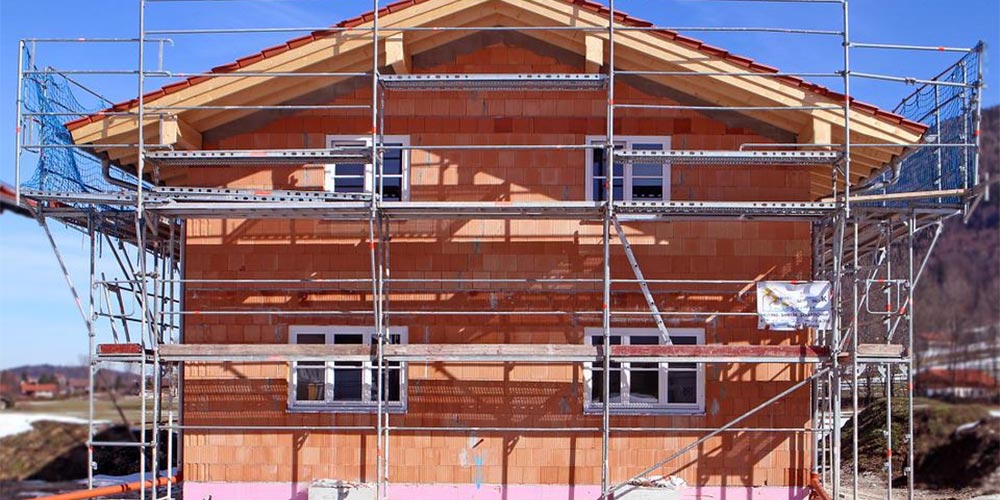
Scaffolding is a valuable companion whether doing up an existing property or constructing a brand-new building. Scaffolding can come in many forms, but ultimately, it comprises a temporary structure to aid the maintenance, repair or construction process at a property. This structure provides support to keep work-in-progress buildings in place, allow workers to work at height safely, and make it easier to transport materials.
Scaffolding is a safe and effective solution for both personal and commercial projects. While the prominent sight of scaffolding towers is most associated with large projects such as new-build apartments and offices, they can be used anywhere. The main difference is that each solution is tailored to the individual circumstance. Scaffolding for a house, for example, would be designed to match the building’s size and shape. Commercial scaffolding, however, is often on a much larger scale and would require more advanced equipment, particularly to cover greater verticality.
No matter what, scaffolding is an excellent idea if you want to spruce up your house in a safe and productive way. Intelligent Scaffolding is a specialist scaffolding company in the United Kingdom, offering customers a range of services, from construction scaffolding to concert staging. With decades of experience working with personal and commercial customers, Intelligent is well aware of the best advantages of scaffolding for all environments.
In this article, Intelligent Scaffolding will walk us through some of the best reasons to use scaffolding when renovating your house.
Improved Safety
The core feature of a scaffolding system is that it will vastly improve your safety. Scaffolding is there to support you during the renovation process. Without a scaffolding system, you risk having a serious accident such as a fall. Working at height is one of the most common accidents within the construction industry. Ladders are a popular alternative to scaffolding, but they are quite limited. Ladders may slip, move unexpectedly or not have support for multiple people. In comparison, scaffolding is a fixed platform that enables multiple people to work for long periods. A ladder is usually only recommended for quick, low-risk situations where accidents are unlikely, and a stable surface is guaranteed.
With all that said, scaffolding does come with its own unique risks. When installing and dismantling a system, this should be carried out by a trained expert. You should also only hire equipment from a reputable company. Faulty scaffolding can lead to accidents and a false sense of confidence when working at height.
Greater Convenience
Next up is the greater convenience that scaffolding provides, an extremely useful advantage when time and effort are of utmost importance. Scaffolding allows you to work efficiently to complete tasks on time and to a high standard without sacrificing quality. While installing a system can take time, your job is much easier once it is in place. You are free to move around and do your job without worrying about safety or moving the platform. You can even place all the necessary tools and equipment on the scaffolding with you, providing you with easy access to everything you need.
Bespoke Solutions
Scaffolding is often bespoke, allowing you to design a solution for every scenario. This benefit means that you can navigate difficult obstacles such as unusually high ceilings, irregular surfaces or awkward placements. Ladders, for example, are fixed solutions that cannot be adapted for unexpected challenges. With scaffolding, you can find a suitable position that fits most. It allows workers to do their job at the perfect position and angle.
Ultimately, scaffolding solutions are all about achieving safety, convenience and comfort. They allow renovations to be completed in no time and place the worker at the forefront of the safety and productivity considerations.
